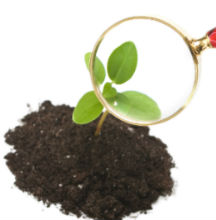During fall, nothing beats a winter squash dressed with butter and brown sugar and roasted until tender in the oven for a tasty side dish. Winter squashes are now maturing in the garden and can be stored successfully for a number of months if stored correctly. Generally there are 3 types of winter squash grown here and include acorn, butternut and Hubbard varieties. Pumpkins are also considered to be part of this category with some differences. Below are techniques for storing through the fall months.
If the vines of the winter squash have wilted, yellowed and/or died before the listed maturity date and you do not have fruit which has fully matured. These should not be stored but should be used immediately. A fully mature rind is hard, cannot be scratched with a fingernail and will exhibit a dull appearance versus the shiny sheen of a young squash. Pumpkins will have a softer rind but exhibit all the same characteristics of mature winter squash.
Although the fruits will tolerate light frosts, harvest them before a hard frost to prevent injury to the fruit. Harvest by cutting the fruit off the vine while keeping a small part of the stem still attached to the fruit (except Hubbard) as this will help prevent rot. Make sure not to make cuts or scratches in the rind as this will considerably shorten storage time. Cure squash (except for acorn) and pumpkins before storing them. Curing involves placing them in an area where the temperature is in the 80’s and the relative humidity is very high. At home, this may be accomplished by placing in a small cabinet with a small heater controlled by a thermostat or partitioning off part of the garage. This process helps heal cuts for long term storage. Cure the squash for about 10 days and then store.
Store winter squash in temperatures between 50 – 55 F. Temperatures below this will substantially shorten the shelf life. Squash should be dry and placed on shelves for good air circulation. Never store fruit on a cold concrete floor or next to ripening fruit like apples as it will shorten the shelf life. Check the condition of the squash frequently and throw out fruit that is beginning to rot.The storage life of acorn squash is 1 to 2 months, butternut; 2-3 months, Hubbard; 3-6 months and pumpkins; 2-3 months.
Also remember the last vegetables still ripening on the vine in your vegetable garden. Tomatoes in half-ripe stage will now ripen faster if removed from the vine and taken indoors to a cool, dark location to finish ripening. Tomatoes ripened indoors will not have the fantastic taste of summer but still hold a fresh tomato taste. If you have started fall vegetables for the cooler months, it is essential seeds and seedlings have adequate moisture until they are bigger so don’t forget to water them.




